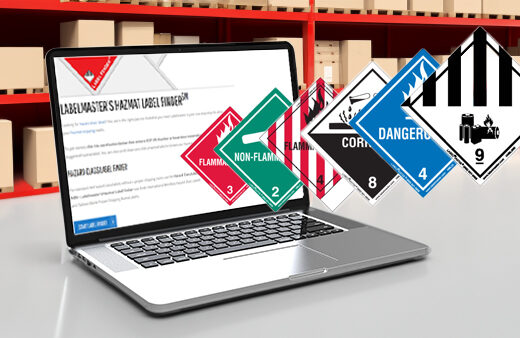The United States Department of Transportation’s (USDOT) Federal Motor Carrier Safety Administration (FMCSA) today published the supplemental proposed rulemaking which will require the use of electronic logs for commercial drivers of trucks and busses engaged in interstate commerce in the Federal Register. According to the FMCSA’s news release of March 13th, the new rule, if…
-
Introducing Greif Drums: The Smarter, Stronger, and More Sustainable Solution for Hazardous Material Storage
-
Embracing Sustainability in DG Packaging: A Path Forward
-
Have a hazmat question? Have a phone? Call our DG Regulations Hotline!
-
Label Finder Updates Include International Shipping Options
-
Want more large-format lithium battery packaging options? We’ve got good news.
Latest Posts
Government 49 CFR Available NOW!
If you handle hazardous material or hazardous waste, or if you are a shipper, carrier or freight forwarder, Government 49 CFR DOT, 2-vol set, Parts 100-177 and Parts 178-199 are a must and it is ready to ship today! Order yours now: http://www.labelmaster.com/shop/books/ground-transport/government-49-cfr
Labelmaster to Showcase Spacemaster® Placarding System at Mid-America Trucking Show (MATS) This Week!
Labelmaster will be at the Mid-America Trucking Show beginning Thursday, March 27th. This year’s event is being held at the Kentucky Exposition Center and is the largest heavy-duty trucking event in the world. The Mid-America Trucking Show is the annual forum for the heavy-duty trucking industry, providing face-to-face interaction between industry representatives and trucking professionals.…
A Somber Anniversary—25 Years after the Exxon Valdez Oil Spill
It is a truism that regulations, whether related to transport, safety, building codes, etc, are to a degree “written in blood” in a turn of phrase often used by safety professionals; that is, often the genesis of a particular rule is based on the lessons learned from an incident which sadly often involved a tragedy…
PHMSA Releases Special Permit Incorporations
The United States Department of Transportation’s (USDOT) Pipeline and Hazardous Materials Safety Administration (PHMSA) has published a final rule in today’s Federal Register which takes the important step of incorporating the terms of a number of Special Permits and/or Competent Authority Approvals into the regulations as standard language.
FMCSA Releases News on Proposed Driver’s Log Rules Change
The United States Department of Transportation’s (USDOT) Federal Motor Carrier Safety Administration (FMCSA) today announced the release of a supplemental proposed rulemaking which will require the use of electronic logs for commercial drivers of trucks and busses engaged in interstate commerce.
Come visit us at booth #319 at the TMC Annual Meeting & Transportation Technology Exhibition!
This show features the latest technology to help fleets improve safety and efficiency. The show will include the latest models of medium- and heavy-duty vehicles, specialty and alternative-fueled vehicles, components, safety and information technology and services. Stop by and see how Labelmaster can help you with all your transportation safety and compliance needs!
Come visit us at booth #319 at the TMC Annual Meeting & Transportation Technology Exhibition!
This show features the latest technology to help fleets improve safety and efficiency. The show will include the latest models of medium- and heavy-duty vehicles, specialty and alternative-fueled vehicles, components, safety and information technology and services. Stop by and see how Labelmaster can help you with all your transportation safety and compliance needs!
FAA Issues Request for Public Comments on Hazmat Notification
On March 4, 2014 the Department of Transportation (USDOT) Federal Aviation Administration (FAA) issued a Notice of Availability in Federal Register (Volume 79, Number 42). The FAA notice seeks comments from the public on the Aviation Rulemaking Committee’s (ARC) recommendations that would establish an “acceptable and effective means” for air carriers to advise travelers of…
US Postal Service Changes Certain DMM Hazardous Materials Regulations to Harmonize with USDOT Rules
Shippers of hazardous materials who ship products using the US Postal Service (USPS) may be pleased with a new ruling from that agency. In a response letter dated 31 January 2014 and addressed to the Council On Safe Transportation of Hazardous Articles (COSTHA) in reference to a September 2013 inquiry made by that body, USPS…











